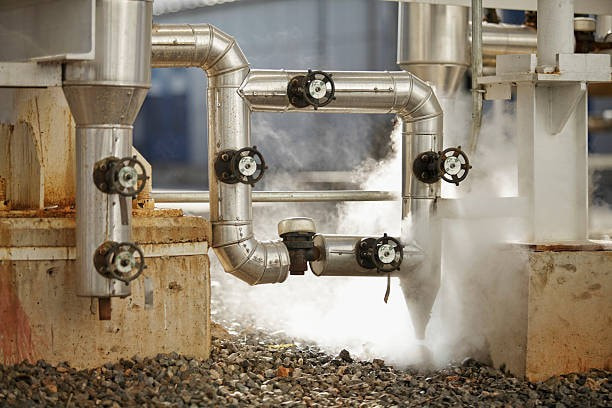Why Do Steam Pipes Often Have to Be Bent?
We often observe that steam pipelines, which appear straightforward, suddenly incorporate bends. This design choice may seem redundant to many, but it serves critical operational purposes. Let's explore the importance of these steam pipeline bends. Understanding Steam Pipeline Bends Steam pipelines operate in two distinct states: high-temperature and near ambient temperature. The alternating hot and cold cycles cause thermal expansion and contraction, leading to displacement and force within the pipes. The longer the pipe, the more significant the displacement and force. To prevent damage to the pipeline, bends, also known as "expansion joints," are employed. These bends absorb the axial expansion displacement of the pipe and help navigate around obstacles like concrete beams and columns. Steam Pipeline Regulations Countries, including ours, have regulations governing the use of expansion joints in pipelines. For instance, Article 4.8.17 of the "Heating, Ventilation and Air Conditioning Design Code" mandates that heating pipes must calculate their thermal expansion. When natural compensation is insufficient, a compensator must be installed. Various power and chemical engineering design specifications also adhere to this requirement. Some of these standards even necessitate software calculations, with power plant design institutes typically using GLIF and chemical engineering design institutes using Caesar. Installation and Compensation Calculation Accurate compensation calculations are essential before installation. The process involves cold drawing, especially critical for the main steam outlet. The brackets, both sliding and fixed, undergo thorough inspections. Natural compensation methods are preferred wherever feasible during the manufacturing process. How Much Does the Pipe Expand? Test calculations indicate that for every 1-meter length of pipe subjected to a 100°C temperature rise, the expansion is approximately 1.2mm. In industries like power plants, where pipeline temperatures can soar to 500-600°C, 1 meter of pipe expands by 7-8mm. Metal, while capable of enduring tensile stress, cannot be compressed. The historical bulging of rails due to a 50°C temperature difference under ambient conditions was mitigated by implementing segmented rails. Pipelines, which can stretch for hundreds of meters or even tens of kilometers, experience significant stress from temperature changes. If this stress exceeds the pipeline's limit, it could lead to catastrophic failures. Use of Compensators When natural compensation falls short, compensators step in to address the issue. Compensators can absorb axial, transverse, and angular hot and cold deformations of the pipeline and mitigate the impact of equipment vibrations. U-shaped sections on steam pipes serve a similar function, providing essential flexibility and protection. For a deeper understanding of how steam pipeline bends and compensators affect operational efficiency, check out this valuable resource: [constant spring supports](https://www.teksupply.com/constant-spring-supports). In conclusion, steam pipeline bends are vital for managing thermal expansion and preventing potential damage. Regulations, compensation calculations, and the use of compensators all play a crucial role in ensuring the safe and efficient operation of steam pipelines.




